Did you know that Himalayan cats and Persian cats both come from the same breed?
Although Himalayan cats were first produced by mixing Siamese and Persians together in order to generate long-haired cats with pointed ears, this method has since been abandoned. In 1984, the CFA merged the Himalayan and Persian breeds, which resulted in the creation of a new color group within the Persian breed known as the Himalayan. CFA registration numbers for Himalayans and Persians with Himalayan heritage will always begin in the 3,000 range, regardless of when the individual was born.
Himalayans are also known as pointed Persians in the cat world. Himalayans are similar to Persians, however, they have a lighter-colored body with darker spots on the ears, legs and paws, tail, and face. They also have beautiful blue eyes.
Bicolor Himalayans
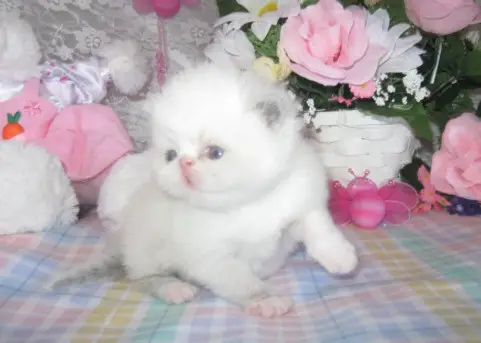
Now, the amazing beauty of the patchwork coat that is characteristic of Bicolor Persians has been mixed with the lovely blue eyes that are characteristic of the Himalayans. Yes! You now have the option of getting a Bicolor with blue eyes!
Take note of how each kitten is distinctively marked, as is the case with all bicolor cats. There will never be two kittens that are precisely alike to one another.
Black Persian

Kittens of this breed, the Black Persian, are born with blue eyes. The hue of their eyes will change as they continue to mature.
When fully grown, the eyes of a Black Persian Kitten will take on a coppery hue much like these.
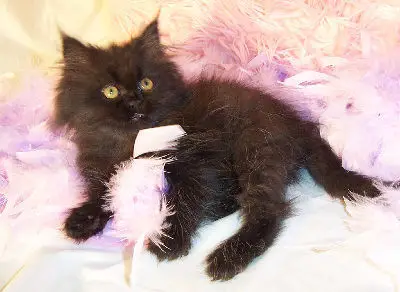
Black & White Persian
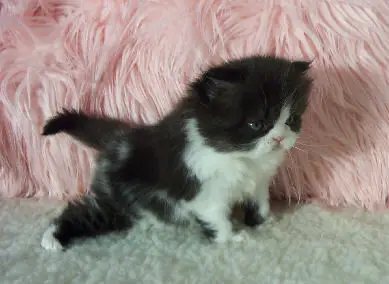
The contrast of hues in the black and white bicolor kittens is extremely stunning.
It’s exciting to watch where the colors will fall when you have bicolor kittens. Each kitten will be unique.
Bicolor Persian kittens are very active!
Blue Persian

The Blue Persian cat stands out due to its flat face and huge eyes. They also have an exceptionally small snout, which might make it difficult for them to breathe properly when compared to other cats. They are also muscular cats with medium to big physique, hefty bones, and short, thick legs.
Blue & White Persian

Bicolor blue and white Persians make the cutest pets!
They are born with blue eyes, but as they grow older, their eyes will always become copper.
It’s fun to watch where the colors fall when you have bicolor kittens. Each kitten will be unique. White mittens and socks, as well as a white chin and chest, are virtually usually seen on bicolors. They often have a white stripe on their forehead, as well as a splash of a grey goatee or even a mustache.
Blue Eyed White Persian

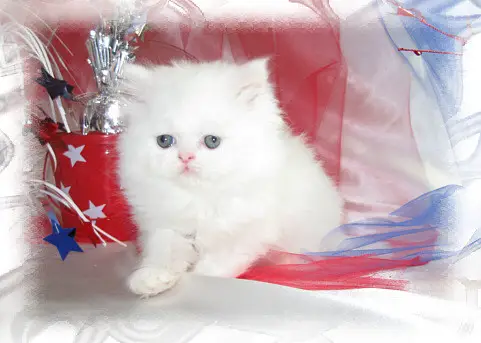
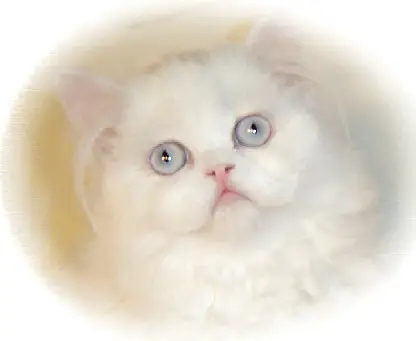
Persians are one of the most famous and identifiable cat breeds, thanks to their smooth and silky coats, unique smushed faces, and gentle demeanor. Blue eyes are common among white Persians.
White Persian kittens have been a popular Persian cat color for a long time! Persians are one of the earliest cat breeds known to man.
Because of their innate beauty and charming temperaments, white Persian kittens have much sought after. We really like the baby doll face, which has big cheeks and a great round, cobby torso. These cats and kittens are naturally sweet and like being handled, combed, and held. More than simply a lovely face, they will wow you with their intelligence and demeanor. They often crave their owners’ attention and love, but they are also capable of finding methods to entertain themselves on their own. They get along nicely with dogs and children and adapt quickly to new environments.
If you are seeking a white Persian kitten with blue eyes, please keep in mind that all white Persian kittens are born with blue eyes, but as they grow, their eyes may change to copper or stay blue. Some white kittens may have one copper and one blue eye! Blue-eyed Persians may be deaf at times, while copper-eyed Persians can hear just as well as odd-eyed Persians, at least on the side of their copper eye. Pink paw pads and noses will always be seen on white kittens.
White kittens must have at least one white parent at all times. This hue cannot be passed down across generations. However, depending on the color genes they contain, a white sire or mother may produce hues other than white. It’s worth noting that the majority of white kittens will have a patch of color on the top of their head. This area will reveal the color gene the cat has. If the spot is blue, this cat is said to be ‘masking’ blue. As the cat develops into its adult coat and loses its kitten coat, the spot will fade and vanish.
Calico Persian
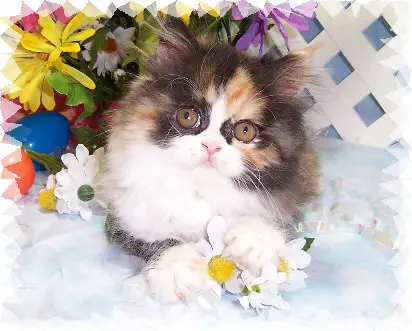
Calico kittens are extremely rare!
Calico kittens are nearly typically female and are red, black, and white.
Dilute Calico Persian Kitten
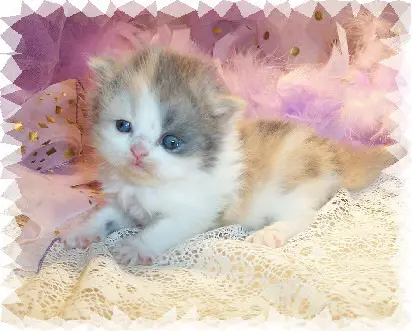
Dilute Calico kittens are cream, blue and white.
Chocolate Persian
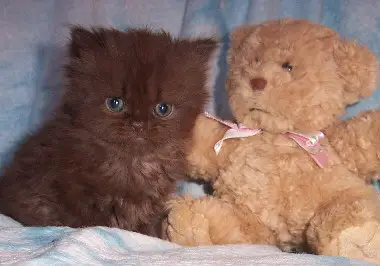
Chocolate Persian kittens have the appearance of teddy bears! Pink paw pads and pink noses distinguish Chocolate Persian Kittens. Newborn Chocolate Persian kittens have blue eyes that will eventually turn to copper.
Chocolate Point Himalayan

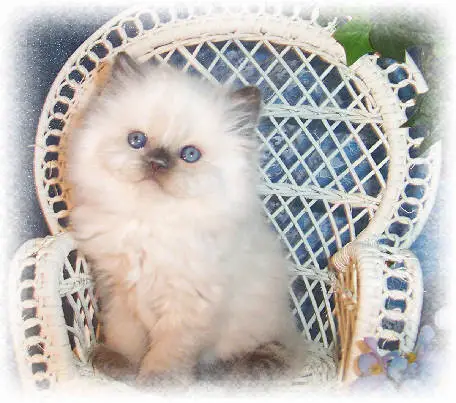
For as long as I can remember, the Chocolate Point Himalayan has been my go-to Persian color.
The striking contrast between those creamy chocolate points and those gorgeous blue eyes is very mesmerizing. We have plenty of opportunities to appreciate this uncommon and stunning color pattern of chocolate and points.
The fur of a Himalayan is long and thick, and it is very silky and fluffy to the touch. The coat is as soft as silk, which tangles far less, and is much simpler to care for than a coat that is more cottony. The majority of our young cats are quite adept at grooming themselves and have a strong desire to maintain a spotless appearance. However, they do need to be brushed on a consistent basis and given baths on occasion.
We work with each individual kitten to teach them not only how to tolerate, but also how to love, having their fur brushed and taking baths. Before they leave us, they will have developed a high tolerance for being handled, washed, and groomed. This becomes more crucial as the kitten grows older to ensure that you are able to easily keep up with their grooming needs. It is possible that major issues may arise in the future if an adult cat is not taught in this manner and is not used to having its fur combed and cleaned regularly.
There are eight peaks in the Himalayas. The parts of the face, ears, legs, and tail, as well the tail, are where the darker coloring falls, and these are the points. The name for the shadowy portion of their face is the mask. The points illustrate the primary coloration of the cat. There is a striking difference between the color of the body and the color of the points. The body is a considerably lighter tint. It’s not uncommon for older cats to have a more delicate coloring all over their bodies.
Chocolate Point Himalayans have a body hue that is similar to white, with points that are milk chocolate-colored and have a warm undertone. Their nose leather and paw pads are cinnamon pink.
Did you know that all Himalayans are born white?
As they mature, their points and mask gradually become more visible, and they get darker as they develop more. The paw pads on this little Chocolate Point Himalayan Kitten are pink, which is one of the telltale signs that it has a real chocolate point coat pattern.
Cream Persian
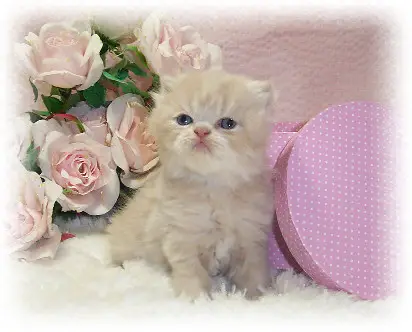
Cream Persian kittens have a bright buff cream tint to them. Their paw pads and noses are pink. Lighter colors are preferable.
Flame Point Himalayan
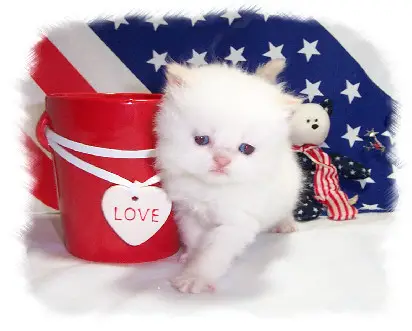

All Himalayans are stunning, but the Flame Point Himalayan is something unique. They feature the characteristic Himalayan’s luxurious hair with a light, brilliant color on the paws, tail, ears, and mask. They have the sweet, placid demeanors that make Himalayans so desirable.
Lilac Persian
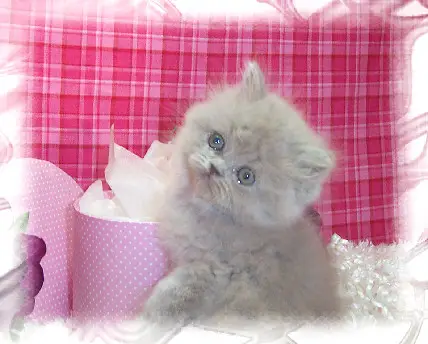
Lilac Persian Kittens have a pinkish tone and are a warm lavender hue. Their noses are purple, and their paw pads are pink. As adults, Lilac Persians will have copper eyes.
Lilac Point Himalayan

A lilac point’s body is substantially lighter in color than that of a seal point or a chocolate point. Lilac Point Himalayans are in high demand and may be difficult to find since both the mother and father must not only contain the chocolate gene but also dilute it.
When they are around 2 weeks old and their eyes have opened, you can just see the violet tint on their ears.
At three weeks, you can see some color on all of the points.
A lilac point is readily distinguished from a blue point by its pink nose.
The kitten’s body maintains a glacier white as it develops.
Older cats may have modest body shading but should have a considerably lighter coat than a blue point.

Point Lilac Himalayans should be glacially white. Frosty grey points with a rosy tone The nose leather and paw pads are lavender-pink. And deep, bright blue eyes.
Red Persian
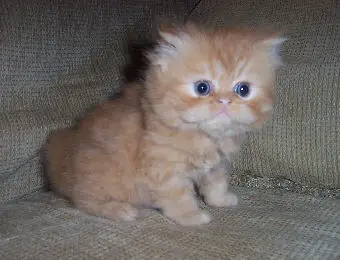

All Persians, even red Persians, are born with blue eyes. The kitten’s eyes shift from blue to copper as it develops.
Red & White Bicolor Persian

Did you know that the vast majority of Red and Red & White Bicolor Persians are male?
Seal Point Himalayan
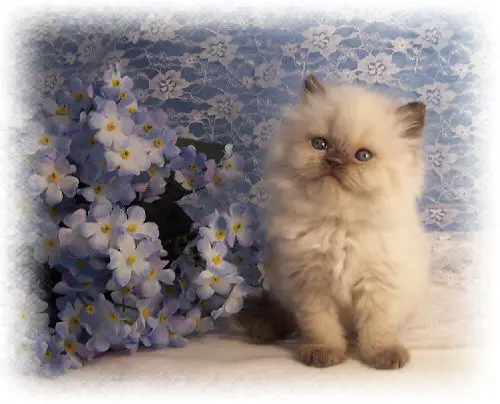
Point of Sealing Himalayans should have a pale fawn to the cream body with a warm tone that progressively fades into a lighter hue on the stomach and chest. Deep seal brown colored points, nose leather, and paw pads, with deep blue eyes.
The body color of Seal Point Himalayans may vary from cream to tan to even brown. We aim for a cream-colored body since it provides such a strong contrast to the points, resulting in a stunning overall aesthetic. I’ve seen seal points with extremely dark brown bodies, and although they’re certainly beautiful cats, I prefer those with milder body coloring.
Seal Points are the most prevalent and popular Himalayan hue. They are born with blue eyes that stay blue throughout their lives. The hue of the eyes may vary from deep blue to sky blue.
*Chocolate Points have a lighter body color and pink paw pads.*
***Note: If there is a lot of chocolate in those lines, seals will frequently have reddish paw pads. This readily fools the inexperienced eye, resulting in a large number of seal points being reported as chocolates.
Here’s an excellent example… Is it a Seal Point Himalayan or a Chocolate Himalayan?
An adult Seal Point looks like this.
Shaded Silver Persian Kittens / Chinchilla Persian Kittens

I believe the Chinchilla and Silver hues are both adorable; yet, it appears that very few people are interested in adopting those colors.
Both the Shaded Silver Persian Kittens and the Chinchilla Persian Kittens have adorable faces that look like dolls and plump cheeks that make them irresistible. They have huge eyes that have an emerald green color and are lined with dark eyeliner that is referred to as “mascara.” This quality is exclusive to this breed of Persian cat and differentiates them from all other varieties of the breed. Every Silver Persian begins life with a very dark coat, which gradually lightens as the cat matures.
Silvers have eyes that are either green or blue-green in color, and the paw pads and nose leather on their feet are black. Shaded Silvers are white and show a touch of black tipping on their back and down their sides; they are a bit darker than Chinchilla Silvers. Chinchilla Silvers are a brilliant white color. Shaded Silvers are white and show a bit of black tipping on their back and down their sides.
Tortoiseshell (Torti) Persian
Tortie Persian Kittens are completely red and black.
Every Tortie Persian Kitten will be unique, depending on where the red and black spots fall.
All images from http://www.wonderfluf.com
